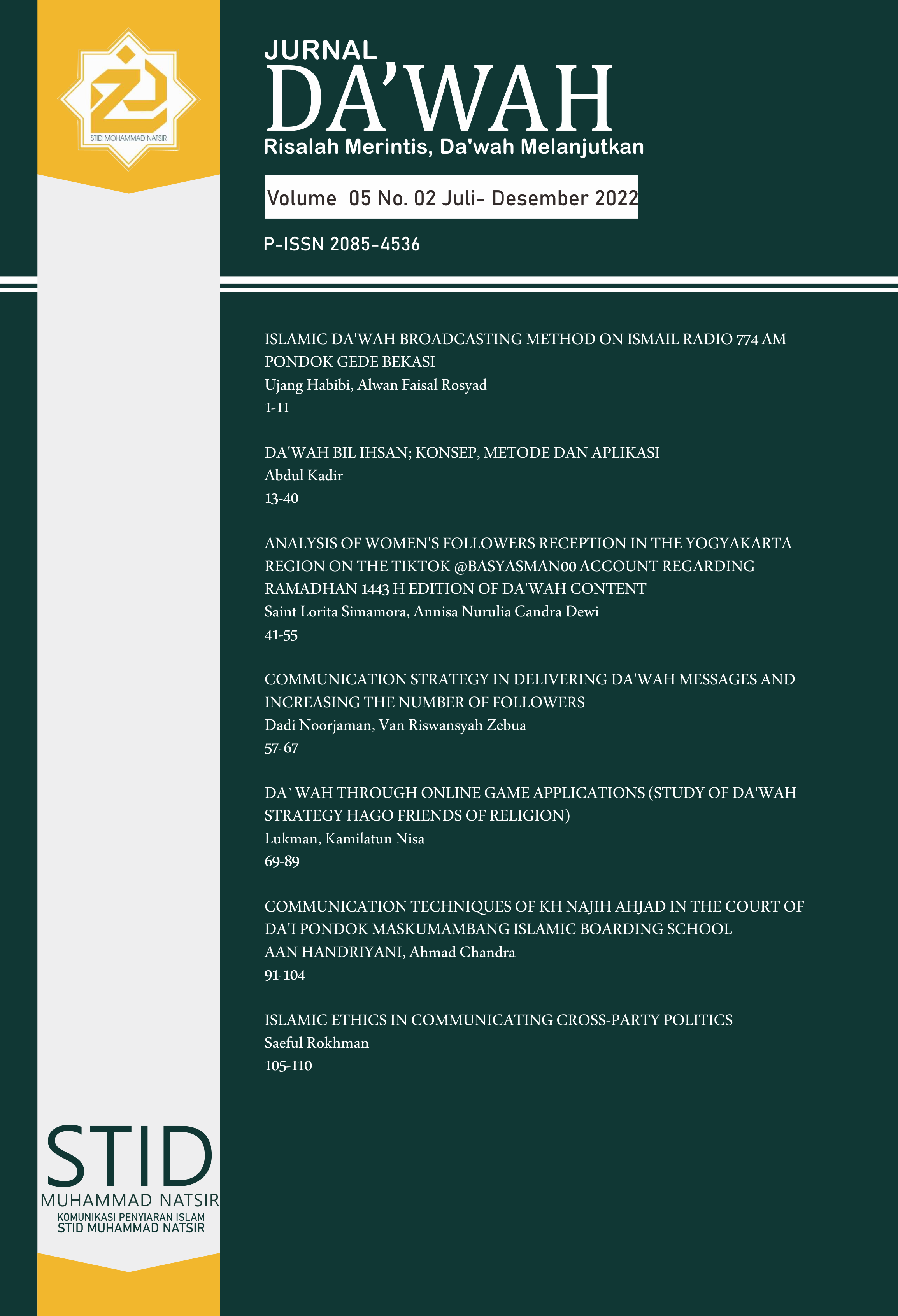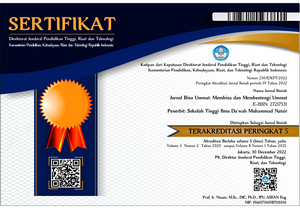ISLAMIC DA'WAH BROADCASTING METHOD ON ISMAIL RADIO 774 AM PONDOK GEDE BEKASI
DOI:
https://doi.org/10.38214/jurnaldawahstidnatsir.v5i2.137Keywords:
Ismail Radio, Adlibitum Method, Script Reading Method, Islamic Da'wah BroadcastingAbstract
Research purpose: How the Islamic Da'wah Broadcasting method on the Ismail Radio 774 AM. Conclusion: Two methods applied by Ismail Radio774 AM. The first is the adlibitum method, namely the method of delivering broadcasts through conversation, relaxed. Broadcasters do so without text or script by using fluent, clear, firm and uncomplicated speech. The scond method is script reading, the method is a broadcast while reading the text, either the text is made by yourself or someone else's. In this case, the reading of the text needs to be done as if you are not reading a script, as if it was read ad libitum without a tone of reading.
Published
Versions
- 2023-01-05 (1)
- 2022-12-25 ()
How to Cite
Issue
Section

This work is licensed under a Creative Commons Attribution 4.0 International License.
This work is licensed under a Lisensi Creative Commons Atribusi 4.0 Internasional.
Authors who publish with this journal agree to the following terms:
- Authors retain copyright and grant the journal right of first publication with the work simultaneously licensed under a Creative Commons Attribution License that allows others to share the work with an acknowledgment of the work's authorship and initial publication in this journal.
- Authors are able to enter into separate, additional contractual arrangements for the non-exclusive distribution of the journal's published version of the work (e.g., post it to an institutional repository or publish it in a book), with an acknowledgment of its initial publication in this journal.
- Authors are permitted and encouraged to post their work online (e.g., in institutional repositories or on their website) prior to and during the submission process, as it can lead to productive exchanges, as well as earlier and greater citation of published work (See The Effect of Open Access).




